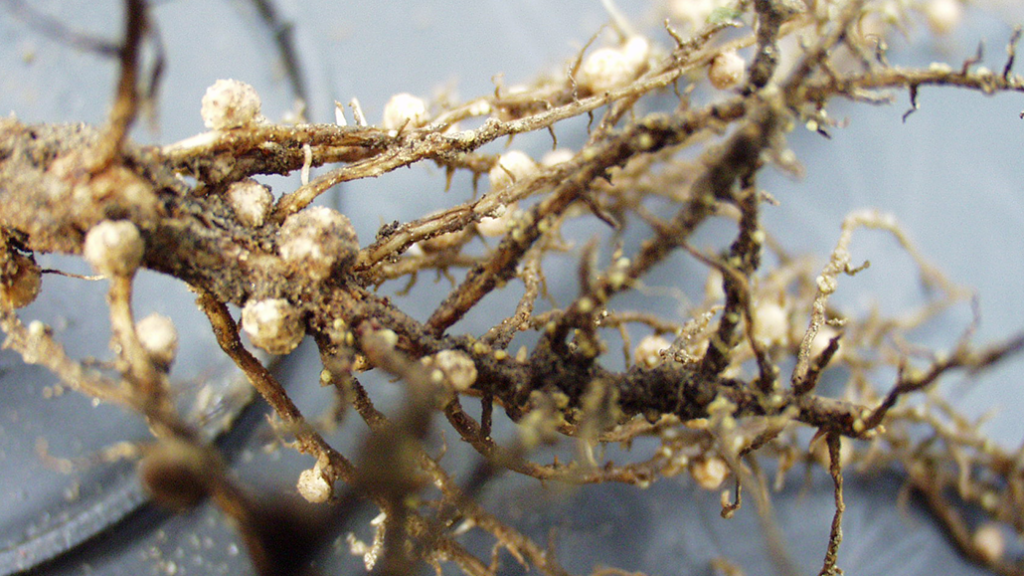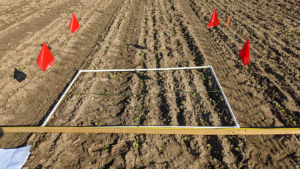Tackling SCN with technology
WORKING TO IDENTIFY MORE RESISTANT GENES

SOYBEAN CYST NEMATODES (SCN) pose a major threat to soybean production. While growers are currently managing the pest by using resistant soybean varieties, the sources of resistant genes are very limited, and resistance is breaking down in some areas.
It is only a matter of time until this microscopic, soil-dwelling pest spreads further, which is why finding new management tools is top of mind for many researchers. For Dr. Bahram Samanfar, Agriculture and Agri-Food Canada (AAFC) research scientist and adjunct research professor in the department of biology at Carleton University, this means identifying more resistant genes.
“This research takes time, but the team that I am collaborating with can see the light at the end of the tunnel,” he says. “We believe that some of our genes have the potential to go into breeding programs to facilitate resistance.”
A COMPUTATIONAL APPROACH
Samanfar recently led a three-year research project to identify and validate novel soybean genes involved in the host-pathogen interaction between soybean and SCN. He took an unorthodox approach by using a bioinformatics tool to investigate interactions.
The Protein-protein Interaction Prediction Engine, or PIPE, is a computational tool originally developed at Carleton University to study yeast in humans. Protein-protein interaction analysis has been used to identify novel candidate genes involved in complex pathways in many organisms.
Samanfar and his team modified PIPE to make it faster, increase the capacity and update the database with the most recent protein sequences for soybean and SCN.
Given the significant number of data files, the analysis was expected to be very time-consuming and labour-intensive. Samanfar credits PhD student Nour Nissan for taking an innovative approach to fast-track the process by building a bioinformatics team that could use the coding program Python.
“She brought in coders and basically trained them in biology,” he explains. “Then she took the genes and all of the interactions and asked which ones were key players.”
The two resistance sources used in existing soybean varieties are Plant Introduction (PI) 88788 and PI 548402, known as Peking, which involves two genes, Rhg1 and Rhg4. “R” stands for resistance, and “hg” for Heterodera glycines, the scientific name for SCN.
Predicting protein-protein interactions allowed Samanfar and his team to use a concept he refers to as “guilt by association,” which assigns functions to unknown proteins based on their interactions with known protein partners. In other words, they looked for any other gene or protein in the database that followed the same pattern and behaved like Rhg1 and Rhg4.
“There was a lot of computation of analysis and coding, but in the end, we came up with a list of 16 candidate genes that are potentially involved in the host-pathogen interaction between soybean and SCN,” he says.
NEXT STEPS
The researchers then performed greenhouse SCN screening of the candidate soybean lines, with genetic variations at the target genes identified by PIPE. They identified allele-specific markers for the candidate genes as potential sources of resistance to SCN, allowing marker-assisted selection in soybean breeding.
“We have a list of genes that we believe are involved in host-pathogen interaction, and we identified the variations that we believe we see,” Samanfar explains. “We developed markers, so if someone wants to check quickly if they have these genes in their population, we can run that genotype for them.”
Now, the team is looking to confirm their shortlisted genes by working with RNA sequencing and other tools. They are currently applying for funding for a large follow-up project.
“I want to cut this list of 16 candidates down to one or two and be able to tell you they are the genes that can be used to make soybeans resistant to SCN,” says Samanfar.
INDUSTRY IMPACTS
He notes that farm organizations and seed companies are urgently asking researchers about new sources of SCN resistance. While SCN is not new, there is new interest in management solutions from a wider area as soybeans continue to expand in western provinces.
“SCN is here, and when it is in the field, you [have it] for at least 10 years,” he says. “SCN is a very stubborn nematode, so it stays alive, and it keeps coming back on shoes and by the birds, animals and wind.”
“I need grain farmers to know that we are working very hard on this. We do have some promising data, and I am very optimistic about something good coming out of this project.”
Samanfar emphasizes that collaboration with nematologist Benjamin Mimee, soybean breeder Elroy Cober, and James Green at Carleton University was key to the project’s success.
This project was funded by the Canadian Agricultural Partnership, a five-year investment by Canada’s federal, provincial and territorial governments and Grain Farmers of Ontario. •











